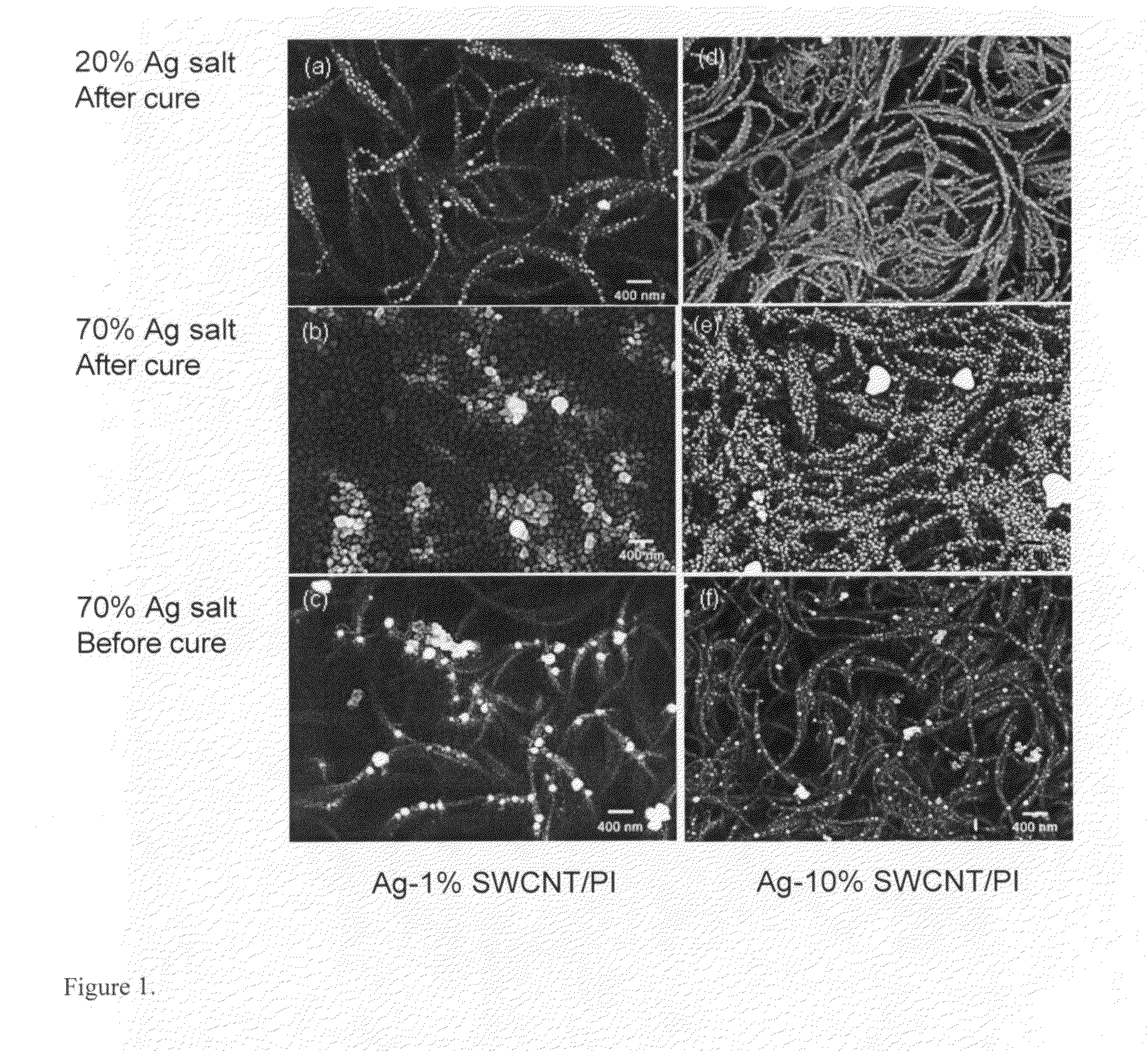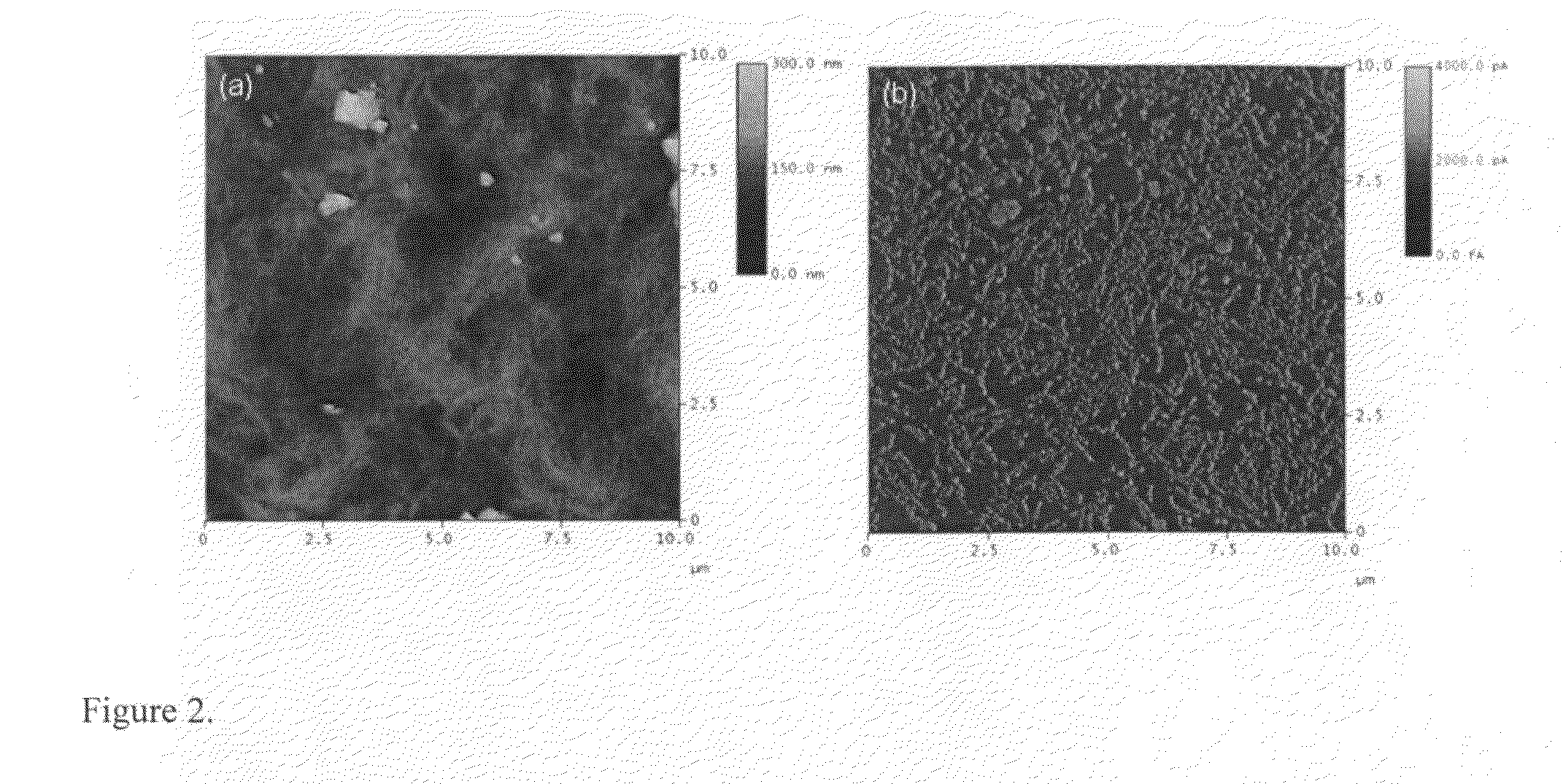Metallized nanotube polymer composite (MNPC) and methods for making same
a technology of nanotubes and composites, applied in the field of effective shielding materials, can solve the problems of insufficient conductivity of shielding emes, ineffective protection of localized lightning attachments, and insufficient conductivity of lightweight polymeric materials with conventional conductive inclusions, etc., to achieve high conductivity and magnetic properties, increase the conductivity of nanotube networks, and the effect of high diffusivity
- Summary
- Abstract
- Description
- Claims
- Application Information
AI Technical Summary
Benefits of technology
Problems solved by technology
Method used
Image
Examples
Embodiment Construction
[0034]The following detailed description is of the best presently contemplated mode of carrying out the invention. This description is not to be taken in a limiting sense, but is made merely for the purpose of illustrating general principles of embodiments of the invention.
[0035]First, uniformly dispersed nanotube polymer composites are prepared and then additional functional nanoparticles are incorporated into the nanotube (NT) polymer composites by the supercritical fluid (SCF) infusion method. Additionally incorporated metal particles or layers deposit preferentially on top of the dispersed nanotube percolation networks of the NT polymer composites using the SCF infusion to improve the shielding effects against EMEs. A high resolution scanning electron micrograph (HRSEM) of a typical MNPC is shown in FIG. 1. Nanotubes (Single wall carbon nanotubes (SWCNT) used in FIG. 1) appear as flexible curvy fibrils and the SCF infused nano-sized metal particles are shown as bright round spot...
PUM
 Login to View More
Login to View More Abstract
Description
Claims
Application Information
 Login to View More
Login to View More - R&D
- Intellectual Property
- Life Sciences
- Materials
- Tech Scout
- Unparalleled Data Quality
- Higher Quality Content
- 60% Fewer Hallucinations
Browse by: Latest US Patents, China's latest patents, Technical Efficacy Thesaurus, Application Domain, Technology Topic, Popular Technical Reports.
© 2025 PatSnap. All rights reserved.Legal|Privacy policy|Modern Slavery Act Transparency Statement|Sitemap|About US| Contact US: help@patsnap.com



